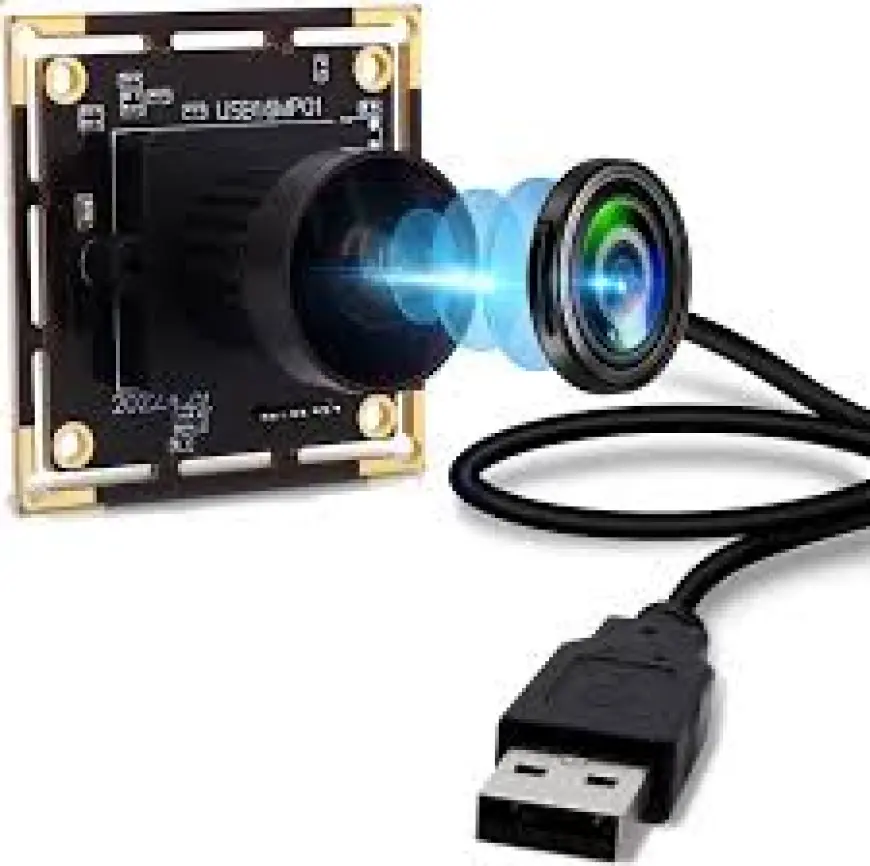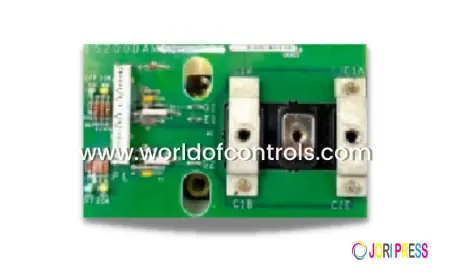Global Automotive Camera Module Market 2030 Industry Scope
The electrification of vehicles, particularly the rise of electric vehicles (EVs), is another critical factor contributing to the growth of the automotive camera module market.

According to TechSci Research report, “Automotive Camera Module Market - Global Industry Size, Share, Trends, Competition Forecast & Opportunities, 2029F”, the Global Automotive Camera Module Market was valued at USD 9.40 Billion in 2023 and is projected to reach USD 18.93 Billion by 2029, growing at a CAGR of 12.50% during the forecast period. The market is undergoing a transformational phase driven by rapid adoption of advanced driver assistance systems (ADAS), the evolution of autonomous driving technologies, and the rising emphasis on road safety regulations worldwide.
Automotive camera modules are becoming indispensable in modern vehicles, serving as the “eyes” of the car by enabling applications such as lane departure warnings, adaptive cruise control, autonomous emergency braking (AEB), pedestrian detection, and 360-degree surround-view monitoring. These modules are no longer restricted to luxury vehicles; mass-market adoption is accelerating as consumers demand greater safety, comfort, and convenience.
Industry Key Highlights
- Market size expected to nearly double by 2029, from USD 9.40 Billion to USD 18.93 Billion.
- Rising adoption of ADAS and autonomous driving features across all vehicle segments.
- Increasing demand for high-resolution, night vision, and multi-view camera modules.
- Regulatory mandates in Europe, North America, and Asia driving adoption of camera-based safety systems.
- Driver Monitoring Systems (DMS) emerging as a critical safety feature in response to distracted and drowsy driving.
- Environmental and technological challenges such as poor weather visibility, high costs, and maintenance concerns remain key barriers.
- Continuous innovation and integration of AI, sensor fusion, and image recognition technologies expected to boost reliability.
Download Free Sample Report: https://www.techsciresearch.com/sample-report.aspx?cid=24988
Emerging Trends in the Automotive Camera Module Market
1. Integration of Artificial Intelligence (AI)
AI is redefining the role of camera modules by enabling real-time object recognition, predictive analytics, and improved decision-making. Camera modules powered by AI can differentiate between vehicles, pedestrians, and road signs with exceptional accuracy.
2. Growth of Driver Monitoring Systems (DMS)
With road safety concerns escalating, Driver Monitoring Systems (DMS) are gaining regulatory approval globally. These systems leverage in-cabin cameras to track driver fatigue, distraction, or inattentiveness. Features such as facial recognition, eye-tracking, and behavioral monitoring are shaping the future of in-vehicle safety.
3. Expansion of 360-Degree Surround View Systems
Consumers are increasingly seeking 360-degree camera modules that provide complete visibility, aiding in parking, lane changes, and low-speed maneuvering. This technology is making its way into mid-range vehicles, not just premium segments.
4. Rise of Night Vision and Thermal Cameras
Night vision and thermal imaging camera modules are seeing rising demand, particularly in regions with poor lighting infrastructure or extreme weather conditions. These modules significantly reduce the risk of accidents during nighttime driving.
5. Increasing Role in Electric and Autonomous Vehicles
The rise of EVs and autonomous cars is accelerating the demand for camera modules. These vehicles require multiple high-performance cameras for navigation, collision avoidance, lane-keeping, and traffic sign recognition.
Key Market Drivers
1. Regulatory Push for Safety Compliance
Governments and regulatory bodies such as Euro NCAP and NHTSA are mandating camera-based safety systems, making technologies like AEB and lane departure warnings mandatory in new vehicles.
2. Rising Consumer Awareness and Demand
Safety and convenience have become significant purchase criteria for consumers. Features like parking assistance, blind-spot detection, and driver fatigue alerts are becoming must-have features in modern vehicles.
3. Technological Advancements
From AI-powered recognition to sensor fusion with radar and LiDAR, rapid technological advancements are enhancing the reliability and scope of automotive camera modules.
4. Growing Demand for Luxury and Premium Vehicles
Luxury vehicles have long led the way in integrating cutting-edge camera systems. Now, as demand for premium trims grows, camera modules are becoming standard features across multiple price brackets.
5. Electrification of the Automotive Industry
Electric and hybrid vehicles, which emphasize safety and advanced technology integration, are increasingly equipped with multiple camera modules.
Technological and Environmental Challenges
Despite growth, the market faces hurdles:
- Adverse Weather Conditions: Rain, snow, and fog reduce camera accuracy.
- Glare and Low Light Issues: Sunlight and headlights impact image clarity.
- Lens Obstructions: Dirt, dust, and debris compromise functionality.
- High Costs: Advanced imaging systems increase vehicle costs.
- Privacy Concerns: In-cabin monitoring systems raise data security questions.
Manufacturers are addressing these challenges by developing weather-resistant enclosures, automated cleaning systems, and advanced image-processing algorithms.
Competitive Analysis
The global automotive camera module market is highly competitive, with several leading players investing in R&D, strategic partnerships, and AI-driven innovations. Key companies include:
- Sony Semiconductor Solutions Corporation – Leading in high-resolution imaging sensors.
- Continental AG – Focused on ADAS and integrated safety systems.
- Denso Corporation – Major player in OEM partnerships for advanced safety systems.
- Robert Bosch GmbH – Innovator in AI-driven camera modules and ADAS solutions.
- Magna International Inc. – Strong expertise in multi-view and surround camera technologies.
- Samsung Electro-Mechanics Co., Ltd. – Advancing miniaturized, high-resolution modules.
- Texas Instruments Incorporated – Specializing in automotive imaging processors.
- Sharp Corporation – Innovating in display-integrated camera systems.
- ZF Friedrichshafen AG – Leading in next-gen ADAS and autonomous vehicle solutions.
- Valeo – Strong focus on thermal imaging and advanced sensor fusion.
The competitive landscape is characterized by continuous innovation and collaboration between automakers, semiconductor companies, and technology providers.
Regional Insights
- Europe & CIS: Fastest-growing region due to stringent Euro NCAP regulations, widespread ADAS adoption, and the rise of EVs.
- North America: Strong market driven by consumer awareness and mandates from NHTSA.
- Asia-Pacific: Largest market share, led by automotive hubs like China, Japan, and South Korea, focusing on mass adoption and cost-effective solutions.
- Middle East & Africa: Emerging opportunities with increasing vehicle safety standards.
- South America: Growing adoption of entry-level ADAS features.
Future Outlook
The future of the global automotive camera module market is promising, with demand expected to expand across all vehicle categories, from entry-level models to luxury cars. As safety regulations tighten and consumer demand for smart, connected, and safe vehicles grows, camera modules will become an integral part of the automotive ecosystem.
The integration of AI, machine learning, and sensor fusion will transform these modules into intelligent systems capable of predictive analysis. Combined with the global push towards autonomous driving and electrification, the automotive camera module market is set for exponential growth beyond 2030.
10 Benefits of the Research Report
- Provides comprehensive market size and forecast analysis till 2029.
- Identifies emerging technology trends shaping the industry.
- Offers detailed segmentation by type, vehicle type, application, and region.
- Highlights regulatory impacts on adoption and growth.
- Delivers insights into key market drivers and restraints.
- Includes competitive landscape analysis with company profiles.
- Evaluates regional growth patterns and opportunities.
- Explores consumer adoption trends and evolving preferences.
- Helps investors identify high-growth segments for potential returns.
- Supports strategic decision-making with data-driven insights.
Conclusion
The Global Automotive Camera Module Market is on a trajectory of rapid expansion, driven by safety mandates, consumer demand for convenience, and the transition towards autonomous driving. While challenges such as adverse weather performance and cost concerns persist, continuous technological innovation and strategic industry collaborations are expected to overcome these barriers. By 2030, automotive camera modules will not only be a standard safety feature but also a cornerstone of the autonomous vehicle ecosystem, reshaping the way vehicles interact with their environment and ensuring safer, smarter mobility for all.
Contact Us-
Mr. Ken Mathews
708 Third Avenue,
Manhattan, NY,
New York – 10017
Tel: +1-646-360-1656
Email: [email protected]
Website: www.techsciresearch.com
What's Your Reaction?
 Like
0
Like
0
 Dislike
0
Dislike
0
 Love
0
Love
0
 Funny
0
Funny
0
 Angry
0
Angry
0
 Sad
0
Sad
0
 Wow
0
Wow
0

















































